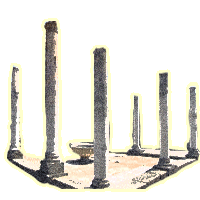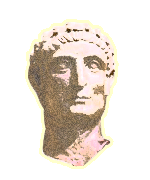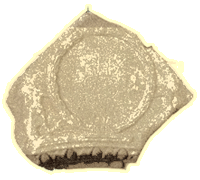 |
||
 F E L I X R O M U L I A N A |
||
|
Late antique imperial palace Gamzigrad - Romuliana (3rd to 4th century) is located close to the road Paracin - Zajecar, 11 kilometres away from Zajecar. The settlement encompasses an area of 6,5 hectares, encircled by a defence system made up of 20 towers, inside of which the remains of an older four - tower system can be seen. The excavations started in 1953 showed that inside of this rampart there are several palaces and temples and on the hill of Magura a sacral complex made up of two crypts and two tumuli was discovered. Chronologically, Gamzigrad is seen in six periods:
Continue |
... but he died in 311 on his way to Sofia. He was buried on Magura as was his mother Romula. There was a funeral along with apotheosis - the act by which mother and son were deified. The complex of temples and palaces served three main purposes -- a place of worship of his motherís divine personality, a monument to his deeds as emperor, and a luxurious villa where Galerius retired after abdication. Romuliana survived until it was plundered by the Huns in the mid 5th century. Later the site became a humble settlement of farmers and craftsmen, finally to be abandoned at the beginning of the 7th century with the arrival of the Slavs. Archeological excavation within the fortress have unearthed the remains of a palace compound with exceptionally fine mosaics, magnificent statue of Galerius, temple devoted to Jupiter and Hercules, public baths and remarkable city gates. Several valuable coin-hordes of Roman gold have been unearthed at the site which continues to yield important roman treasures and artifacts. Among the most important finds from the site are portraits of roman emperors made from the Egyptian purple stone called porphyry and coins that help to accurately date the complex. During the 31st Session of the Unesco World Heritage Committee in Christchurch, New Zealand from the 23rd of June to the second of July, The World Heritage Committee decided to place Gamzigrad-Romuliana, Palace of Galerius on the World Heritage List. Felix Romuliana is a popular tourist stop on the Roman Emperors' trail which links the birthplaces of over 17 Roman Emperors born on the territory of modern Serbia.  TOP
TOP
|
|
  
|
||











